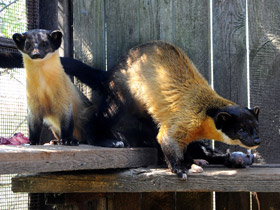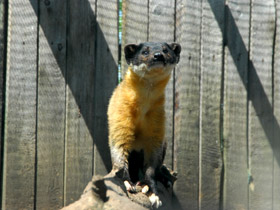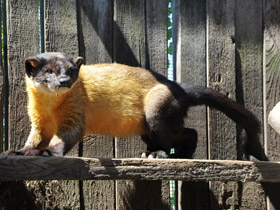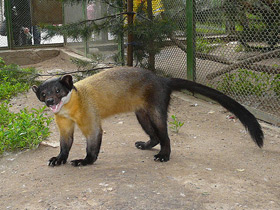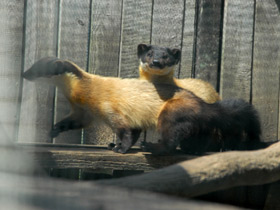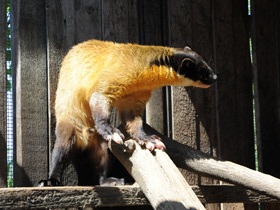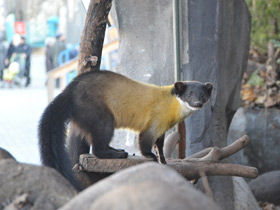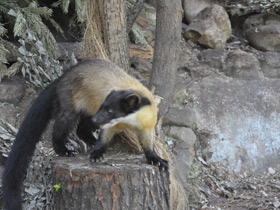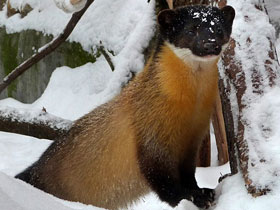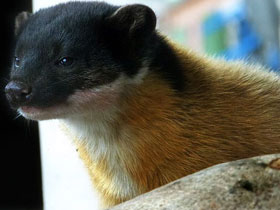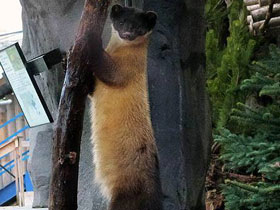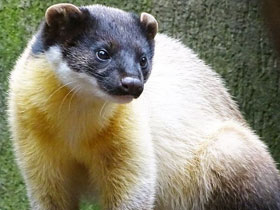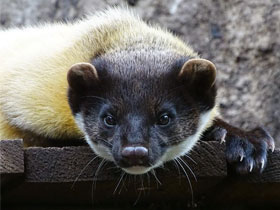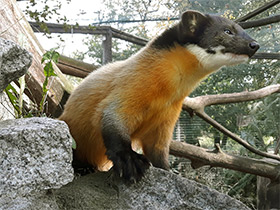The yellow-throated marten (Martes flavigula)
The yellow-throated marten (Martes flavigula) is a marten species native to the Himalayas, Southeast and East Asia. Its coat is bright yellow-golden, and its head and back are distinctly darker, blending together black, white, golden-yellow and brown. It is the largest marten in the Old World, with its tail making up more than half its body length.
It is an omnivore, whose sources of food range from fruit and nectar to invertebrates, rodents, lagomorphs, reptiles and birds, and to small primates and ungulates. It is listed as Least Concern on the IUCN Red List due to its wide distribution, stable population, occurrence in a number of protected areas and an apparent lack of threats.
Appearance and nutrition
Martes flavigula is a species of carnivorous mammal of the family Mustelidae.
Martes flavigula is the largest and most brightly coloured member of the marten family. It is a very agile, bold and strong predator, able to run far and fast in search of prey. In dense forests, when necessary, the marten moves in the treetops, jumping from one to another up to 8-9 m; it can also leap into the snow from the tops of the tallest trees.
Its broad legs allow this beautiful predator to move easily in soft snow and it hunts mainly on the ground. It feeds mainly on small cervids: musk deer in the north of its range and muntjac in the south. Martes flavigula also feeds on wild piglets, rodents, hares, grouse and pheasants on the ground and on squirrels and chipmunks in the treetops. In autumn it eats fruit and nuts.
Reproduction
Martes flavigula form family pairs that persist throughout the animals' lives. Females give birth to 2-3 offspring, which remain with their mother until the following spring, participating in collective musk deer drives. After a female leaves her Martes flavigula offspring to bring in new calves, they prefer to stay together and hunt for a while longer.
Predators
The yellow-throated marten has few predators, but occasionally may fall foul of much larger carnivores; remains of sporadic individuals have turned up in the scat or stomachs of Siberian tigers (Panthera tigris) and Asian black bears (Ursus thibetanus).There is a report that a mountain hawk-eagle (Nisaetus nipalensis) kills an adult yellow-throated marten.
Conservation
The yellow-throated marten is listed as Least Concern on the IUCN Red List due to its wide distribution and occurrence in protected areas across its range; the global population is stable, and threats are apparently lacking.
Taxonomy
The first written description of the yellow-throated marten in the Western World is given by Thomas Pennant in his History of Quadrupeds (1781), in which he named it "White-cheeked Weasel". Pieter Boddaert featured it in his Elenchus Animalium with the name Mustela flavigula. For a long period after the Elenchus' publication, the existence of the yellow-throated marten was considered doubtful by many zoologists, until a skin was presented to the Museum of the East India Company in 1824 by Thomas Hardwicke.
As of 2005, nine subspecies are recognized.

















